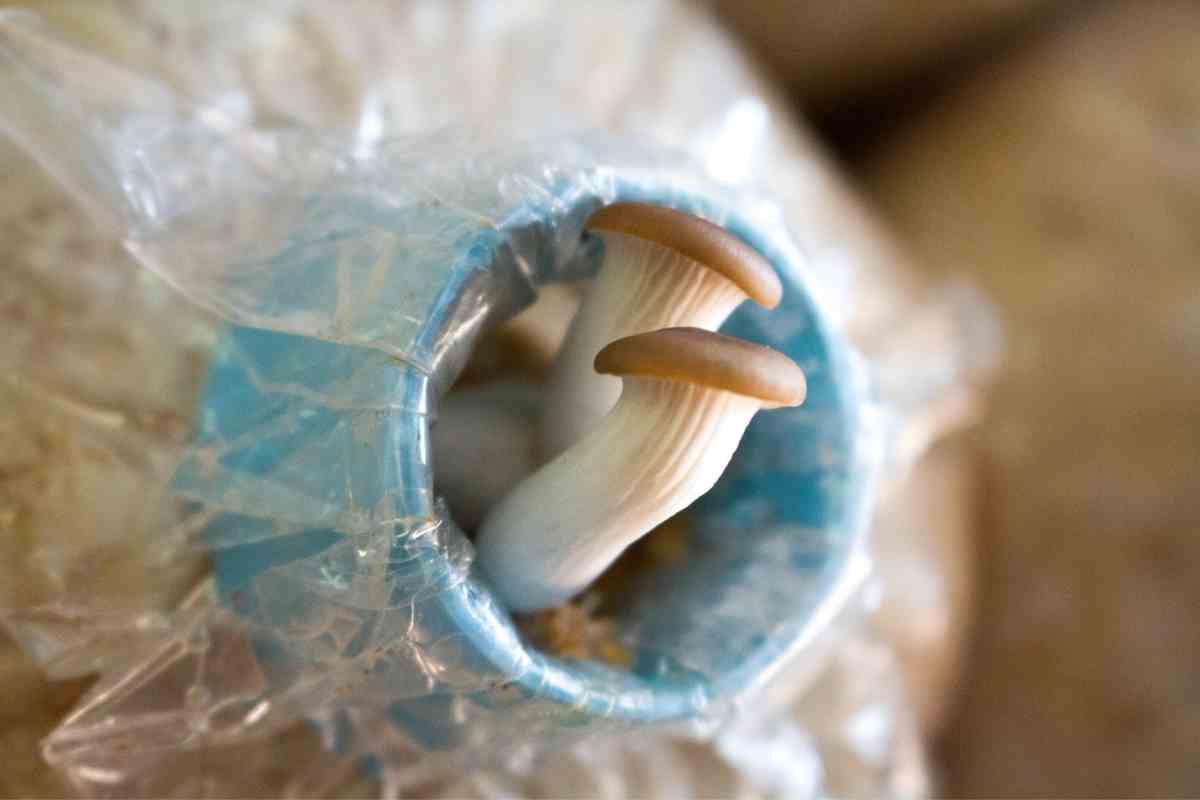Mushrooms are simple to cultivate and come with many health and environmental benefits.
However, they are not the easiest plants to cultivate. This is because they require specific conditions for them to grow.
Also, different mushroom species require different conditions for optimum growth.
However, with the right growing conditions and proper harvesting, you can have a steady supply of mushrooms for months.
7 Tips For Growing Mushrooms Indoors For The First Time
1. Go for the correct type of mushroom
Proper research is essential before embarking on mushroom cultivation.
It would be best to consider how simple and long it takes for the mushroom to mature.
For a Beginner – Button and oyster mushrooms are some of the easiest species to grow.
Brown caps, wine caps, chanterelles, and shiitake are suitable alternatives as they have a relatively short maturity period.
Enoki mushrooms can be grown indoors, but you have to raise them separately since they require cooler temperatures than other species.
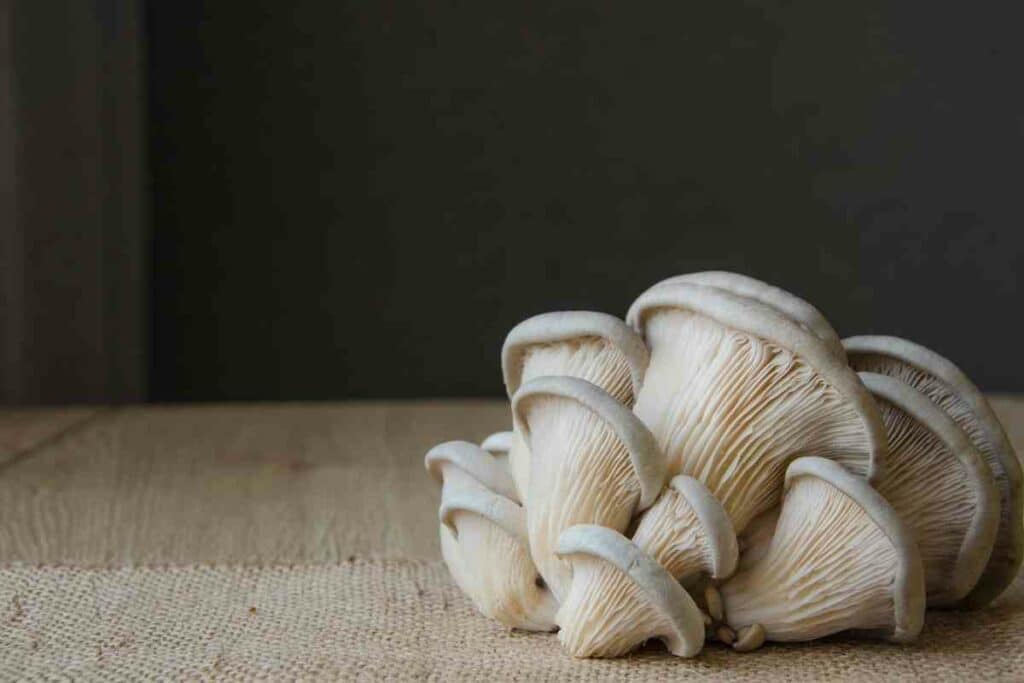
If it is your first time growing mushrooms indoors, opt for spawns rather than spores. Spawns are much easier to incubate and grow.
Lastly, always buy the supplies from a reputable vendor and check for reviews from other gardeners.
2. Choose a favorable place to grow your mushrooms
Mushrooms flourish in dark and humid settings.
They lack chlorophyll, so they don’t require sunlight to make food.
Additionally, they lose moisture quickly since they have no skin, so a high humidity environment slows down the rate of evaporation.
Also, ensure that the soil should be moist and not water-logged.
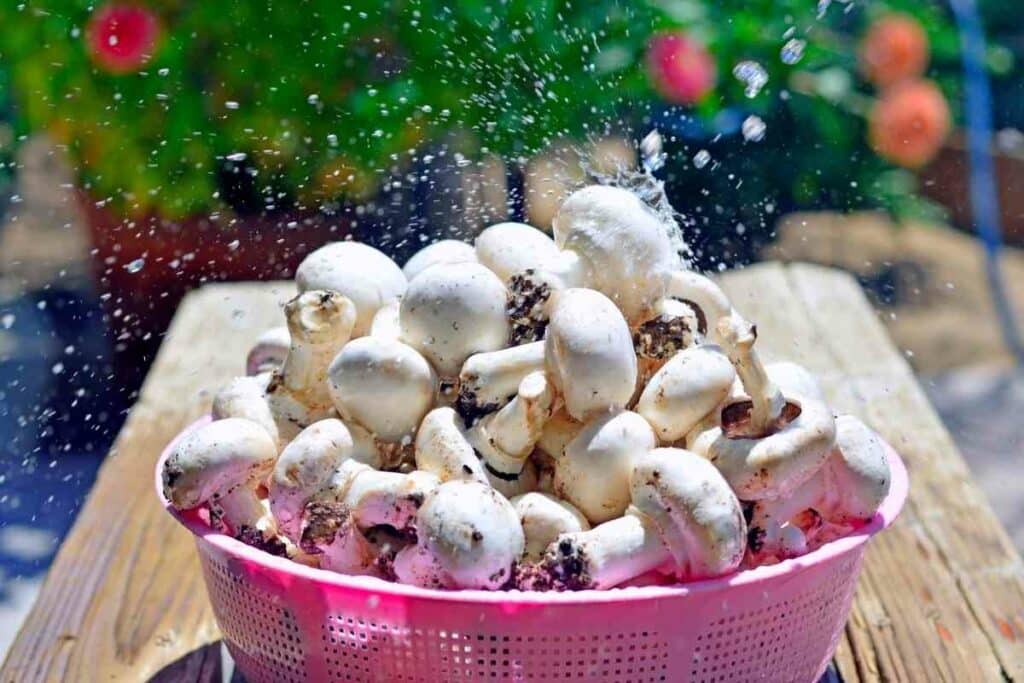
Besides, use a room you occasionally visit that has proper ventilation, such as the basement. Mushrooms release spores in millions as they grow.
This prolonged exposure to these spores may cause respiratory irritations and allergic reactions. That’s why it is best to wear a mask when close to the mushrooms.
3. Carefully select your substrate
A substrate refers to a mushroom’s growing medium since they don’t usually grow in soil.
The mushroom you choose to grow indoors determines which substrate you will use.
However, straw and hardwood sawdust are the most common substrates for indoor mushrooms.
Other substrates used in mushroom farming include:
| Substrates | Description |
|---|---|
| Straw | – It is made from stems of oats, wheat, or barley – They are cheap – Straw is usually pasteurized – Best for – Oyster species |
| Hardwood Sawdust | – Common hardwood species used to make this type of substrate include: Maple, oak, hickory, and beech – It is inexpensive to prepare or buy – Offers faster colonization – If you use sawdust, make sure it is from untreated wood – Best for – Reishi, Shiitakes, and Lions mane |
| Coffee Grounds | – They are high on nitrogen which makes that helps produce higher yields – Preferably use fresh coffee grounds to reduce the probability of contamination – You can either sterilize or pasteurize the grounds – They can also be used as supplements for the other substrates – Best for oyster and shiitake mushrooms |
| Compost Manure | – The manure is left to decompose fully, or it can be expedited by heating it to 160 degrees Fahrenheit – 2 pasteurization processes occur; the first to remove contaminants and the second to remove ammonia. – Best for – White Button, Portobello mushrooms |
4. Always sterilize your substrate
Sterilization is essential to kill any microorganisms present in the substrate.
This will prevent competition for the nutrients with your mushroom spawns.
You can do this in 3 easy steps:
- Place a small batch of straw/sawdust in a bowl
- Pour water into the bowl until all the substrate is damp
- Place it inside the microwave and heat it until all the water evaporates
Working with a small portion ensures thorough sterilization of all the substrate.
You can alternatively use a pressure cooker instead of a microwave.
Sterilization is not only limited to the substrate. Also, sterilize your hands, growing kits, and work tools to avoid contamination.
5. Maintain optimal growth conditions
To ensure your mushrooms are healthy, you must regulate their environmental conditions.
Begin by adding your spawn to the sterilized substrate and place it in a dark room.
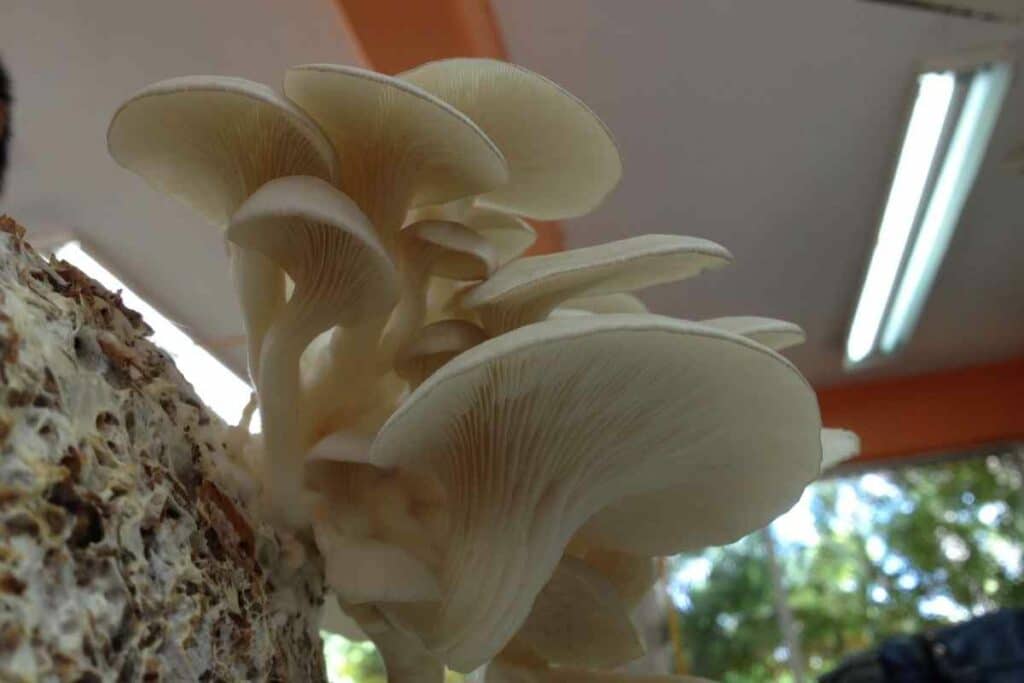
The optimum growth temperature of mushroom spawns is about 70 degrees Fahrenheit.
Use a heating pad to maintain this temperature for the next 2- 3 weeks.
During This Period – The spawn will spread throughout the substrate, eventually colonizing it. The spawn will fully propagate after about three weeks. Once this happens, reduce the heating pad’s temperature to around 55-60 degrees Fahrenheit. Afterward, add a thin layer of soil (usually one inch) to the mixture and ensure it remains humid.
While you can water the mushrooms regularly, covering the pan with a damp cloth is more convenient.
The cloth should never dry out and maintain a humidity of around 80-90%.
However, avoid too much moisture since it causes deformation of the mushroom caps.
6. Ensure proper maintenance
Like every other crop, mushrooms must be well taken care of through proper maintenance.
In particular, always ensure you keep the growing environment moist and the temperature below 70 degrees Fahrenheit for the entirety of the growth process.
Regularly check the mushroom for any sign of contamination.
The onset of contamination is the development of black or greenish spots on your mushrooms. Immediately discard the affected batch before it spreads to the rest of the growth.
You also need to identify the source of the contamination to prevent a relapse, or you’ll end up losing your entire crop.
7. Watch out for when and how your harvest your mushrooms
While most mushrooms will begin to set 3-4 weeks, wait until the caps open and separate from the stems before you can start harvesting.
Once this happens, use a sharp knife to cut the stalk from the stem rather than pull it out.
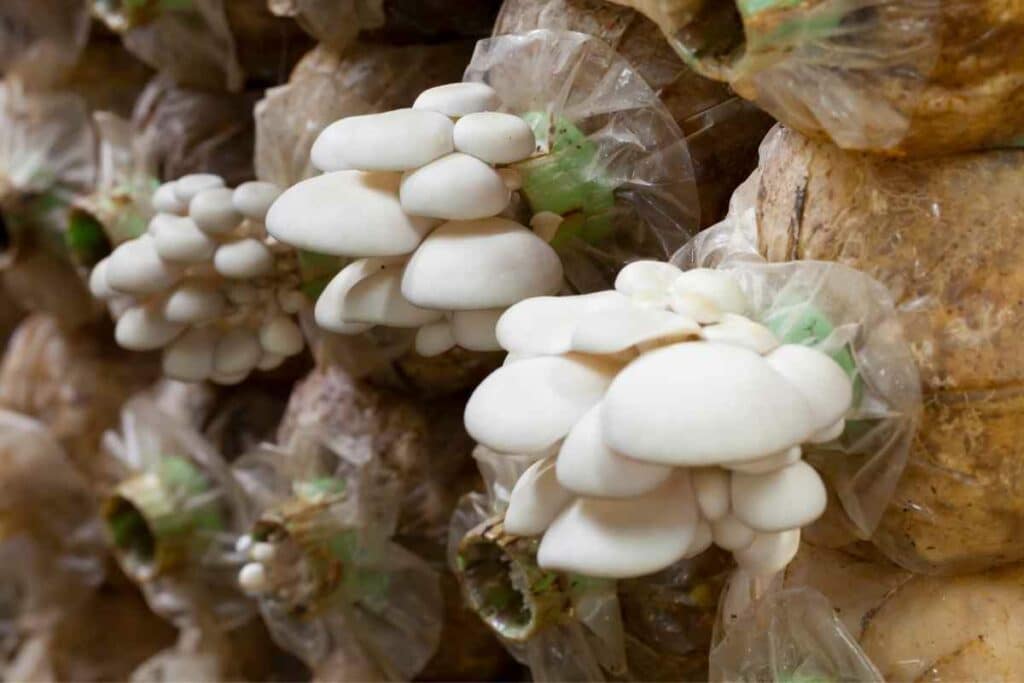
Pulling out the mature mushroom stalks predisposes the growing tender mycelium to damage.
However, you must select the right harvest time to achieve the best yield and quality.
Early harvesting decreases the yield while picking the mushrooms much later increases the output but often reduces the quality.
When you are done, wash the harvested mushrooms, store them in a clean paper bag and refrigerate.
Mushrooms are pretty perishable when unprocessed, so ensure you cook/consume them within a week.
Heads Up! Avoid putting them in the freezer, as this will alter their taste.
Benefits of Growing Mushroom Indoors
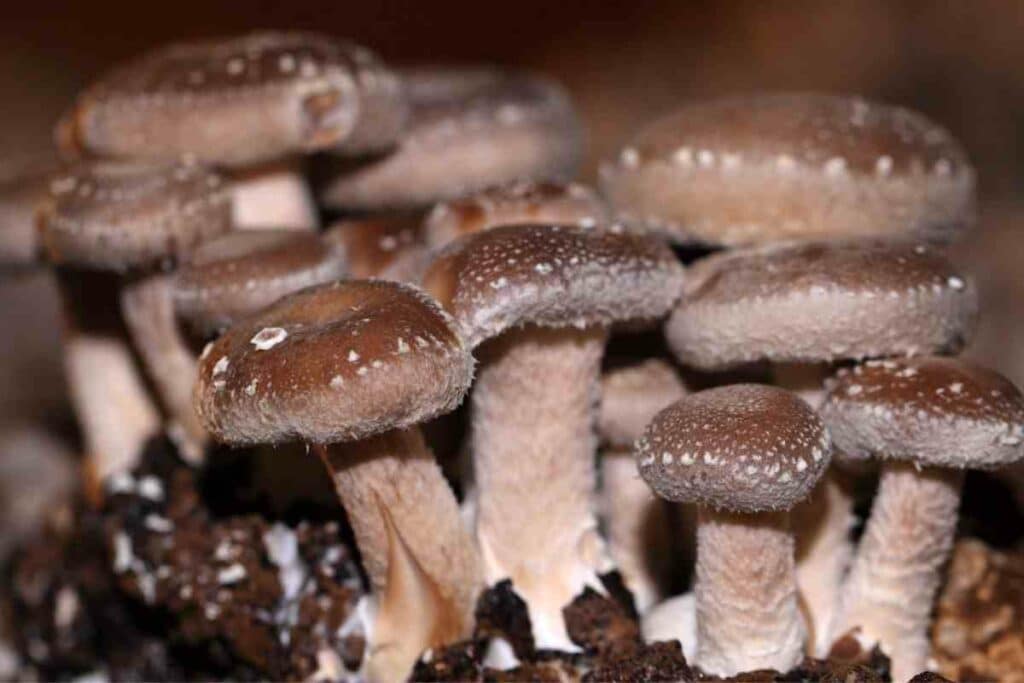
Self-sufficiency
How convenient is it to grow your food?
Under the right conditions, you can start your mushroom farm virtually anywhere around your homestead or city apartment.
Value for Money
In the long run, the cost of making your mushrooms is a fraction of what you’ll pay at the grocery store or restaurants.
Not only is it cheaper, but you also enjoy the convenience of cooking up your own cuisines. You can experiment with different recipes setting up a variety of sumptuous dishes.
Superior Quality
Home-grown mushrooms are superior to processed mushrooms.
They are healthier since they are devoid of preservatives that extend the shelf-life of mushrooms.
Moreover, in a controlled environment, you use lesser pesticides and fertilizers, translating to a tastier and more nutritious meal.
Eco-friendly
Most of the substrates used to grow mushrooms indoors come from waste materials.
Recycling and reusing these materials help to bolster environmental sustainability efforts.
Frequently Asked Questions
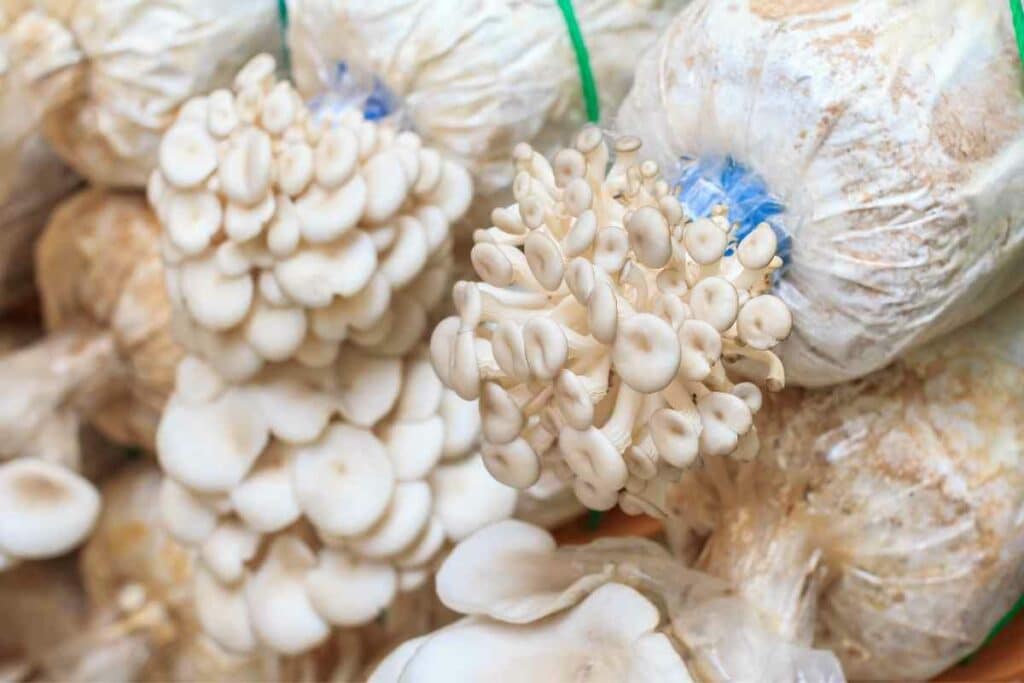
Do mushrooms need sunlight?
While mushrooms don’t require light to grow, they crave some light when producing fruits from mycelium.
Thus, a few hours of sunlight will help to accelerate the mushroom development. However, you can substitute sunlight for a dim bulb and still get the same yields.
How long does it take to grow mushrooms indoors?
Typically, the mushroom variety determines how long it takes to grow them.
For most common species, if you are starting from scratch, it will take you about 7-8 weeks to be ready for harvest.
However, if you use a growing kit, your mushrooms will be ready in as little as 2 weeks.
Which are the best mushrooms to grow indoors?
While there are many mushroom varieties you can grow indoors, Oysters are undoubtedly the best to grow indoors.
They grow in most substrates and require little maintenance.
Do mushrooms grown indoors taste better than wild mushrooms?
Home-grown mushrooms taste better since they grow in a controlled environment.
Sterilization is impossible in a natural setting; thus, wild mushrooms usually compete for food with other organisms.
Also, some wild mushrooms are poisonous, and consuming them might even kill you.
It is sometimes challenging to distinguish edible from inedible wild mushrooms, so it is best to always be cautious.
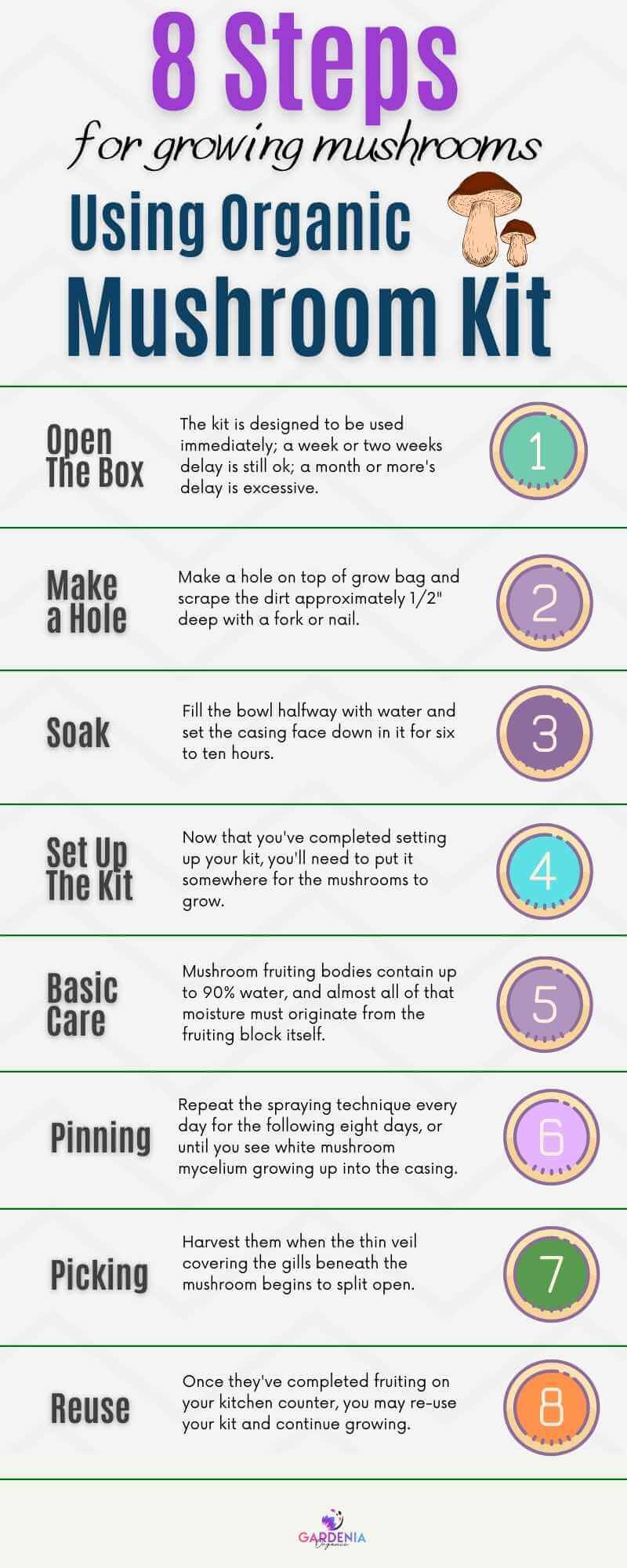
Final Thoughts
When starting out growing mushrooms, focus on only one species.
Do not be in a hurry to diversify. Seeking to produce too many mushrooms too soon often results in dissatisfaction and loss of your investment.
Additionally, invest in the right equipment. The cost of production for growing indoor mushrooms for the first time is usually pretty low.
Each kit has a comprehensive guide, and simply following the instructions will make producing mushrooms indoors easy.
